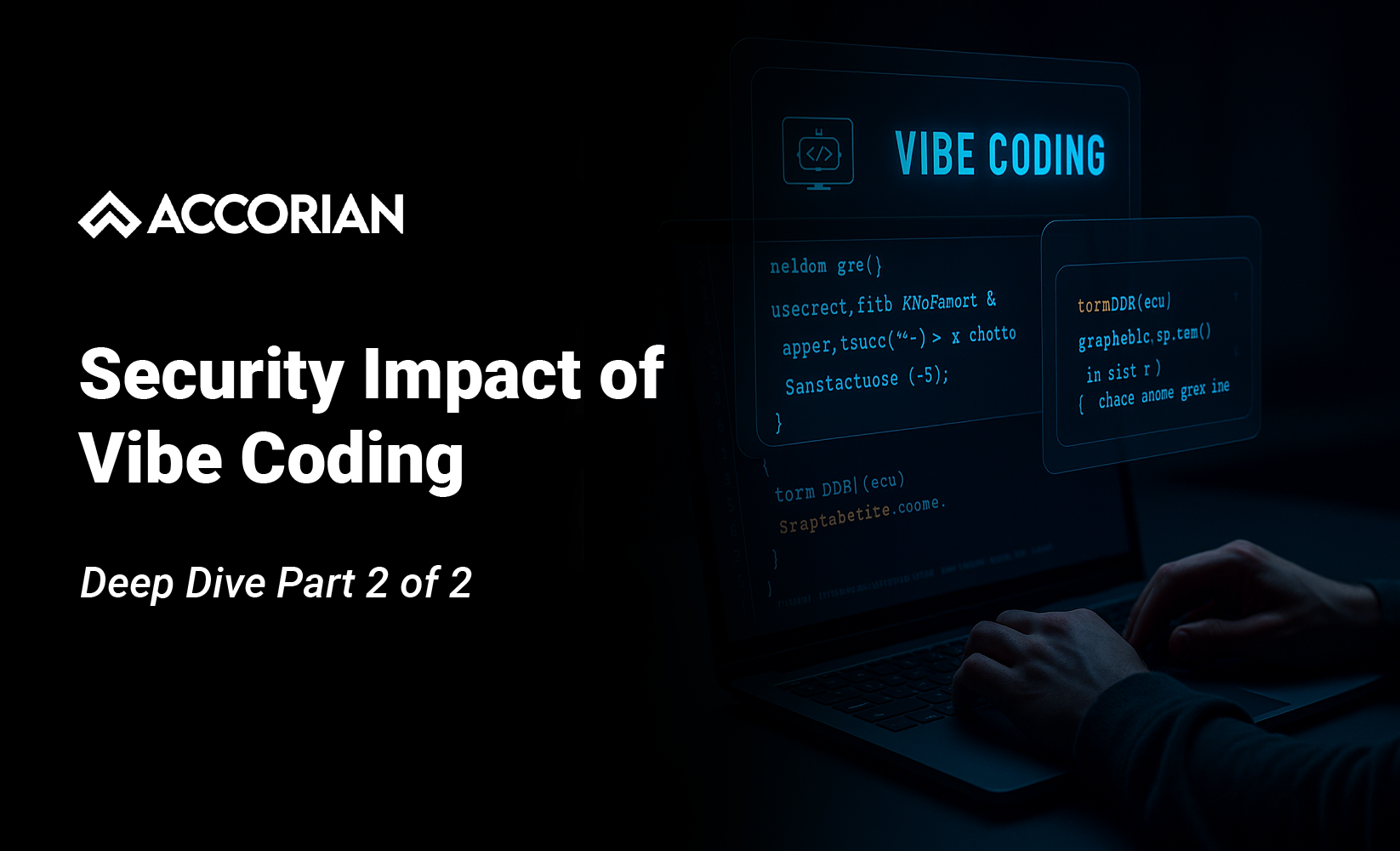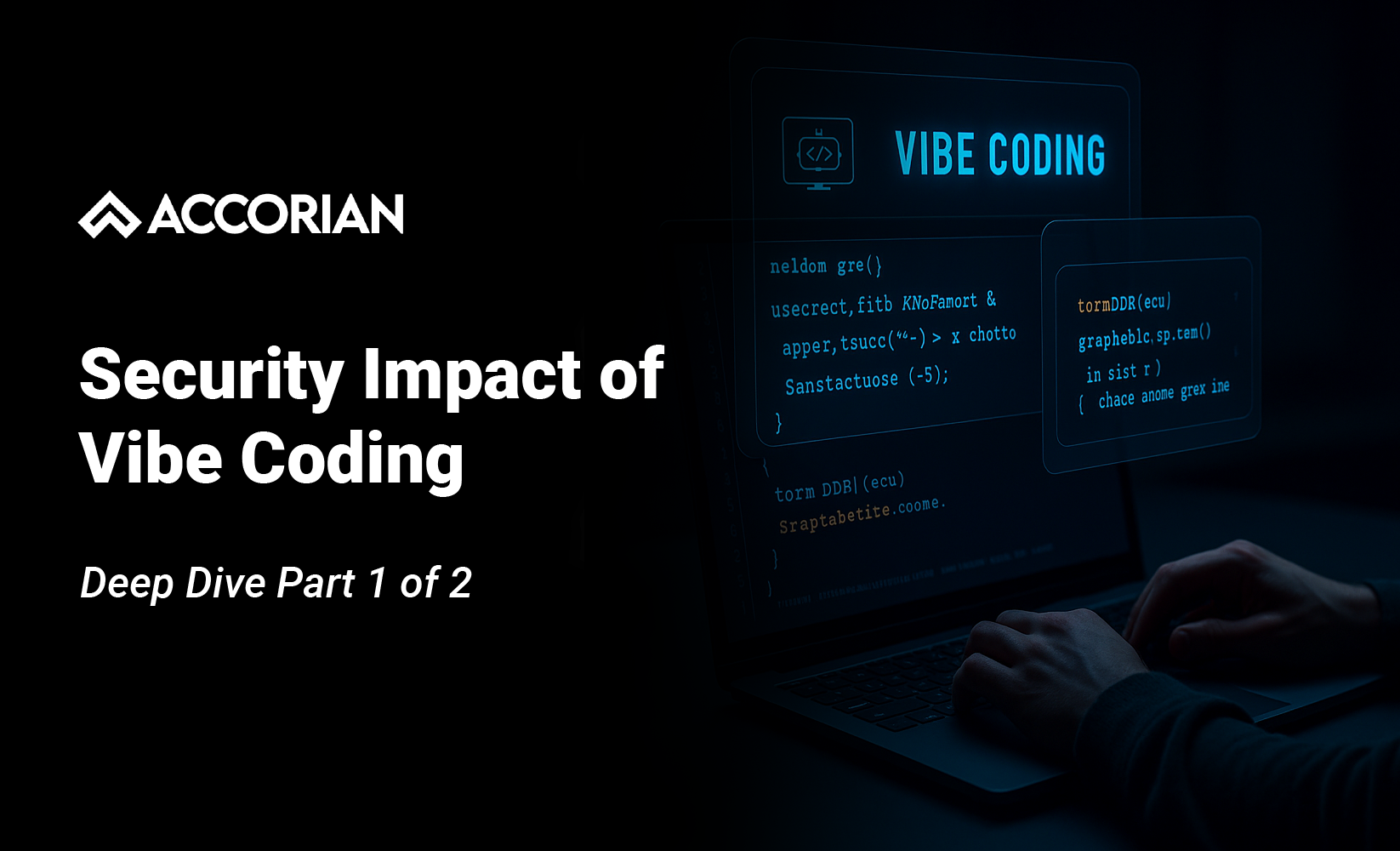As vibe coding gains widespread adoption, enterprises must move beyond awareness of technical vulnerabilities and focus on governance, compliance, and risk mitigation. The second part of this deep dive explores how uncontrolled AI-assisted development leads to regulatory exposure, strategic risk accumulation, and operational inefficiencies and outlines practical steps for CISOs and CTOs to manage these risks. It also highlights how Accorian’s specialized frameworks and services help organizations maintain trust, compliance, and security resilience in an increasingly AI-automated landscape.
1. Compliance, Shadow IT, and Governance Dangers
The compliance and governance challenges introduced by vibe coding are severe:
- Shadow IT Proliferation: Citizen developers can now deploy applications outside IT oversight, introducing unmonitored APIs, cloud storage, and even entire applications.
- Regulatory Risks: AI-generated code may inadvertently mishandle sensitive data, leading to GDPR, HIPAA, or PCI-DSS violations. Intellectual property issues also arise when AI-generated code includes GPL/AGPL licensed snippets without attribution.
Such risks threaten not only technical resilience but also legal and financial standing.
2. Strategic Risk Accumulation for CISOs and CTOs
Strategically, vibe coding creates a cumulative risk effect. Technical debt, opaque codebases, and shadow IT expand the window of vulnerability, making it easier for attackers to persist undetected. Incident response is slowed by a lack of documentation and unclear code lineage. Vendor lock-in is another emerging issue, as reliance on specific AI coding platforms could hinder migration, forensic review, and compliance audits in the future.
3. Holistic Mitigation and Executive Recommendations
To address these risks, CISOs and CTOs should adopt holistic strategies:
- Enterprise AI Governance: Establish centralized policies for AI use, requiring reviews and documentation of AI prompts.
- Security Automation: Enforce SAST, DAST, and SCA checks in CI/CD pipelines for all code.
- Zero Trust for Shadow IT: Implement discovery and monitoring solutions to identify unsanctioned applications.
- Training and Awareness: Train both developers and citizen developers on the secure use of AI coding tools.
- Proactive Review: Expand AppSec capacity with security champions and automated scanning.
- Regulatory Adaptation: Ensure compliance teams are integrated into AI governance discussions.
These recommendations ensure that organizations can leverage the benefits of vibe coding while minimizing the associated risks.
How Accorian Helps Organizations Mitigate Risks
Compliance & Advisory Support
As organizations adopt Vibe Coding to accelerate AI-driven development and automation, Accorian ensures that innovation remains compliant, ethical, and secure. We provide compliance consulting services that are aligned with AI security and governance standards, such as the:
- NIST AI Risk Management Framework (AI RMF)
- ISO/IEC 42001:2023 – AI Management System (AIMS) standard for responsible AI governance
- EU Artificial Intelligence Act, IEEE CertifAIEd – Certification for AI ethics and trustworthiness
- MITRE ATLAS
- Microsoft AI Security Framework
- Cloud Security Alliance (CSA) AI Controls Matrix (AICM)
- SANS Critical AI Security Guidelines.
Our tailored advisory support and security awareness training help clients integrate security-by-design and responsible AI practices into their software development lifecycle. This proactive approach mitigates compliance drift, prevents undesired incidents, and embeds resilience into business processes as Vibe Coding becomes an integral part of enterprise operations.
Cloud Security Assessment
As organizations leverage Vibe Coding for dynamic infrastructure provisioning and automation, cloud security configurations become increasingly complex. We assist in hardening these environments by enforcing least-privilege access, securing IAM roles, and aligning standards such as ISO 27001, NIST CSF, and CIS benchmarks.
We advise against using Vibe-generated code to define sensitive policies such as user roles, S3 permissions, or Lambda functions without validation. Additionally, when public IPs are hardcoded, we ensure they are static and securely managed to prevent exposure.
This disciplined approach keeps cloud assets safe while integrating Vibe-based automation.
Secure Code Review of AI-generated code
Our secure code review process goes beyond identifying traditional vulnerabilities.
We focus on insecure coding patterns that often emerge from AI-assisted or Vibe-generated code.
We focus on identifying issues such as hidden backdoors, licensing breaches, agentic misconfigurations, and unsafe code reuse.
Our reviews ensure that known vulnerability libraries are avoided and that teams maintain proper dependency hygiene. Additionally, we guide development teams on secure design principles, CI/CD pipeline integration, and DevSecOps best practices. This ensures that Vibe Coding implementations are both efficient and compliant with security standards, while remaining resilient to emerging CVEs and AI-induced logic flaws.



